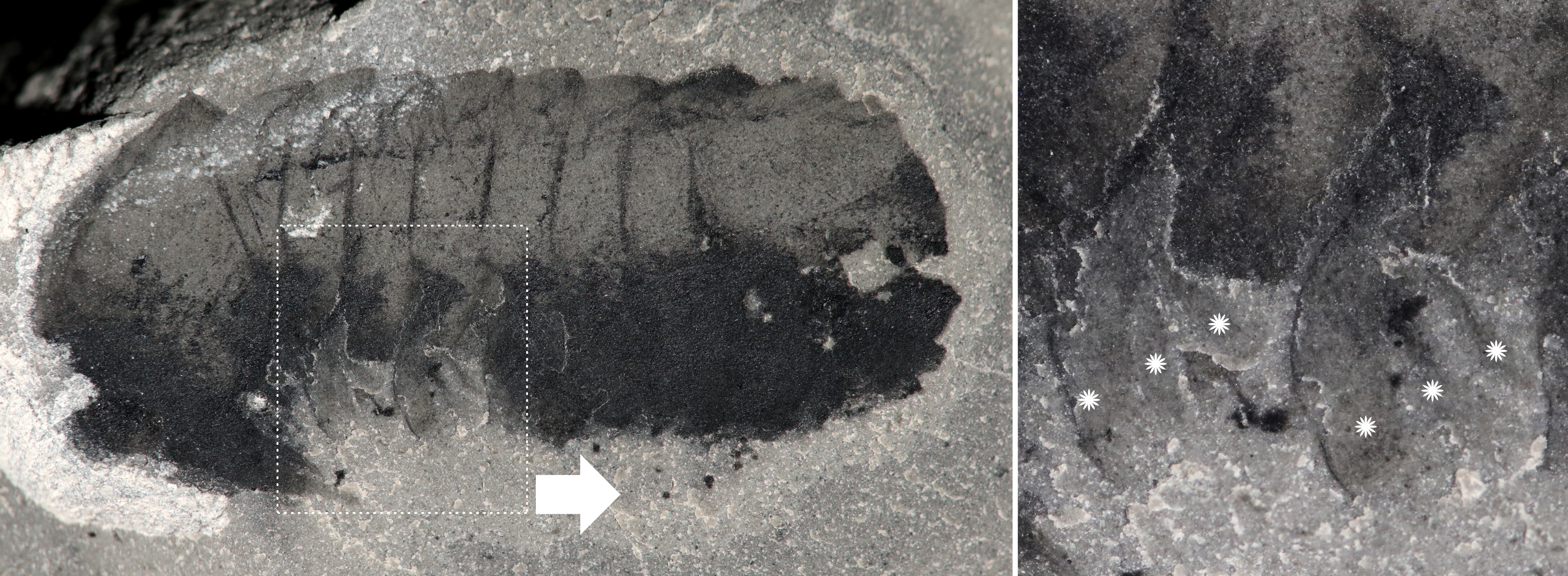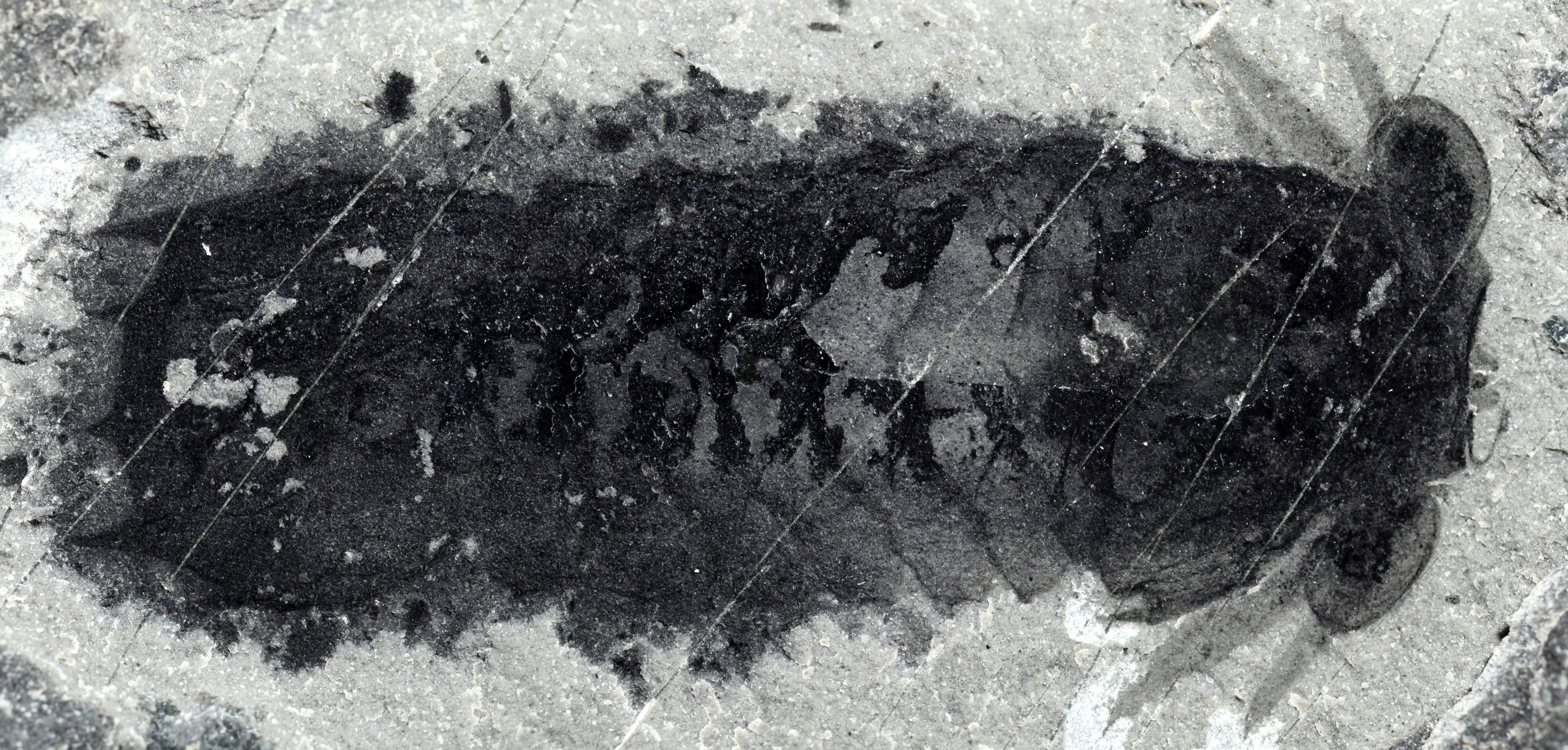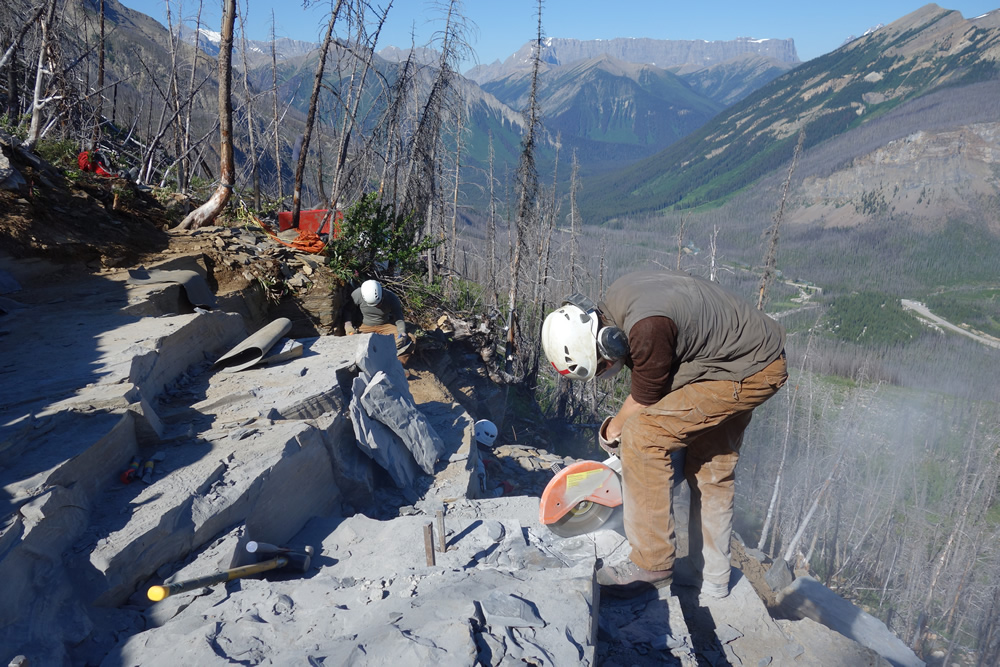Palaeontologists working on the world-renowned Burgess Shale have revealed a new species, Mollisonia plenovenatrix, which they describe as the oldest member of a group of animals called chelicerates. The discovery places the origin of this vast group of animals — over 115,000 species including horseshoe crabs, scorpions and spiders — to a time more than 500 million years ago, near the beginning of the Cambrian Period.
The findings are published today in Nature.
Mollisonia plenovenatrix would have been a fierce predator — for its size. As big as a thumb, the creature boasted a pair of large egg-shaped eyes and a “multi-tool head” with long walking legs, as well as numerous pairs of limbs that could altogether sense, grasp, crush and chew.
But, most importantly, the new species also had a pair of tiny pincers in front of its mouth, called chelicerae. These appendages give the name to the chelicerates which use them to kill, hold and, sometimes, cut their prey.

“Before this discovery, we couldn’t pinpoint the chelicerae in other Cambrian fossils, although some of them clearly have chelicerate-like characteristics,” says Cédric Aria, lead author of the Nature study and a recent graduate of the PhD program in the Department of Ecology & Evolutionary Biology in the Faculty of Arts & Science at the University of Toronto. “This key feature, this ‘coat of arms’ of the chelicerates, was still missing.”
Other features of this fossil, including back limbs likened to gills, further suggest that Mollisonia’s body already resembled those of modern species and was not some primitive version of a chelicerate.
“Chelicerates have what we call either book gills or book lungs,” explains Aria, a member of the Royal Ontario Museum’s Burgess Shale expeditions since 2012 and currently a post-doctoral fellow at the Nanjing Institute of Geology and Palaeontology in China. “They are respiratory organs made of many collated thin sheets, like a book. This greatly increases surface area and therefore gas exchange efficiency. Mollisonia had appendages made up with the equivalent of only three of these sheets, which probably evolved from simpler limbs.”

The authors believe that Mollisonia hunted close to the sea floor — a type of behaviour called benthic predation — thanks to its well-developed walking legs. Because Mollisonia is so modern-looking, chelicerates seem therefore to have prospered quickly, filling in an ecological niche that was otherwise left poorly attended by other arthropods at that time. The authors conclude that the origin of the chelicerates must lie even earlier within the Cambrian, when the heart of the “explosion” really took place.
“Evidence is converging towards picturing the Cambrian explosion as even swifter than what we thought,” says Aria. “Finding a fossil site like the Burgess Shale at the very beginning of the Cambrian would be like looking into the eye of the cyclone.”
The Burgess Shale and similar deposits, such as the Chengjiang biota in China, are immensely important to our understanding of the history of life. They contain the fossil remains of the earliest marine animal communities at a time of uniquely rapid diversification of body forms called the “Cambrian explosion.” Fossil animals from these sites are notable for the exceptional preservation of an extensive array of features such as limbs and eyes, but also guts and, much more rare, nervous system tissues.
Mollisonia was first described more than a century ago by the discoverer of the Burgess Shale, Charles Doolittle Walcott. However, until now, only rare exoskeletons of this animal were known.

”It is the first time that evidence of the limbs and other soft tissues of this type of animal are described, which were key to revealing its affinity,” said co-author Jean-Bernard Caron, associate professor in the Departments of Ecology & Evolutionary Biology and Earth Sciences at U of T, and Aria’s PhD supervisor.
The exceptionally well-preserved fossils come from a new Burgess Shale site near Marble Canyon, in Kootenay National Park, British Columbia.
“Marble Canyon is the biggest spotlight of my career so far. This area keeps giving us wonderful treasures year after year,” says Caron, the Richard M. Ivey Curator of Invertebrate Palaeontology at the Royal Ontario Museum and leader of the Burgess Shale expeditions for the past 10 years. “I would not have imagined that we could, in a way, rediscover the Burgess Shale like this, a hundred years later, with all the new species we are finding.”
The specimens of Mollisonia plenovenatrix described in this new research are better preserved than the ones found at the original Walcott quarry that is located about 40 kilometers northwest of the Marble Canyon quarry. Many other fossils found at Marble Canyon and surrounding areas have already played a critical role in our understanding of the early evolution of many animal groups.
Support for the research and field work came from the Royal Ontario Museum, the Polk Milstein Family, the National Geographic Society, the Swedish Research Council, the National Science Foundation and Pomona College. The research was also supported the Natural Sciences and Engineering Research Council of Canada, the Dorothy Strelsin Foundation, a President's International Fellowship Initiative Grant from the Nanjing Institute of Geology and Palaeontology, and a China Postdoctoral Science Foundation Grant.

